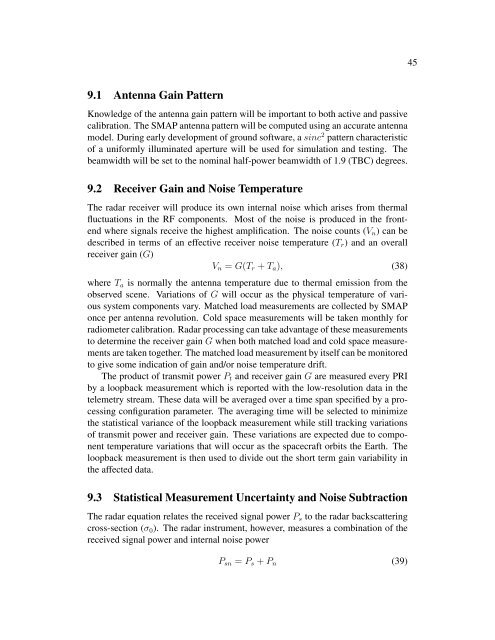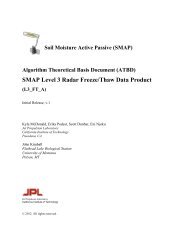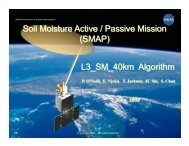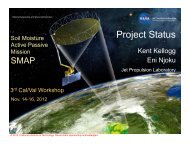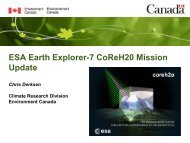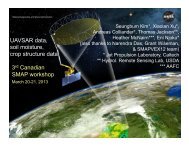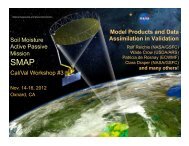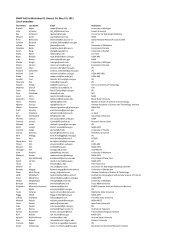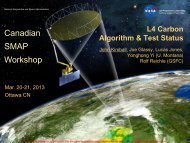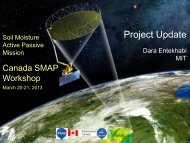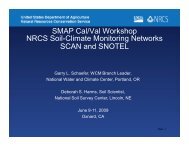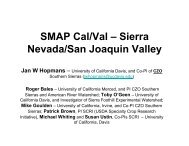(ATBD) SMAP Level 1 Radar Data Products - NASA
(ATBD) SMAP Level 1 Radar Data Products - NASA
(ATBD) SMAP Level 1 Radar Data Products - NASA
You also want an ePaper? Increase the reach of your titles
YUMPU automatically turns print PDFs into web optimized ePapers that Google loves.
45<br />
9.1 Antenna Gain Pattern<br />
Knowledge of the antenna gain pattern will be important to both active and passive<br />
calibration. The <strong>SMAP</strong> antenna pattern will be computed using an accurate antenna<br />
model. During early development of ground software, a sinc 2 pattern characteristic<br />
of a uniformly illuminated aperture will be used for simulation and testing. The<br />
beamwidth will be set to the nominal half-power beamwidth of 1.9 (TBC) degrees.<br />
9.2 Receiver Gain and Noise Temperature<br />
The radar receiver will produce its own internal noise which arises from thermal<br />
fluctuations in the RF components. Most of the noise is produced in the frontend<br />
where signals receive the highest amplification. The noise counts (V n ) can be<br />
described in terms of an effective receiver noise temperature (T r ) and an overall<br />
receiver gain (G)<br />
V n = G(T r + T a ), (38)<br />
where T a is normally the antenna temperature due to thermal emission from the<br />
observed scene. Variations of G will occur as the physical temperature of various<br />
system components vary. Matched load measurements are collected by <strong>SMAP</strong><br />
once per antenna revolution. Cold space measurements will be taken monthly for<br />
radiometer calibration. <strong>Radar</strong> processing can take advantage of these measurements<br />
to determine the receiver gain G when both matched load and cold space measurements<br />
are taken together. The matched load measurement by itself can be monitored<br />
to give some indication of gain and/or noise temperature drift.<br />
The product of transmit power P t and receiver gain G are measured every PRI<br />
by a loopback measurement which is reported with the low-resolution data in the<br />
telemetry stream. These data will be averaged over a time span specified by a processing<br />
configuration parameter. The averaging time will be selected to minimize<br />
the statistical variance of the loopback measurement while still tracking variations<br />
of transmit power and receiver gain. These variations are expected due to component<br />
temperature variations that will occur as the spacecraft orbits the Earth. The<br />
loopback measurement is then used to divide out the short term gain variability in<br />
the affected data.<br />
9.3 Statistical Measurement Uncertainty and Noise Subtraction<br />
The radar equation relates the received signal power P s to the radar backscattering<br />
cross-section (σ 0 ). The radar instrument, however, measures a combination of the<br />
received signal power and internal noise power<br />
P sn = P s + P n (39)


